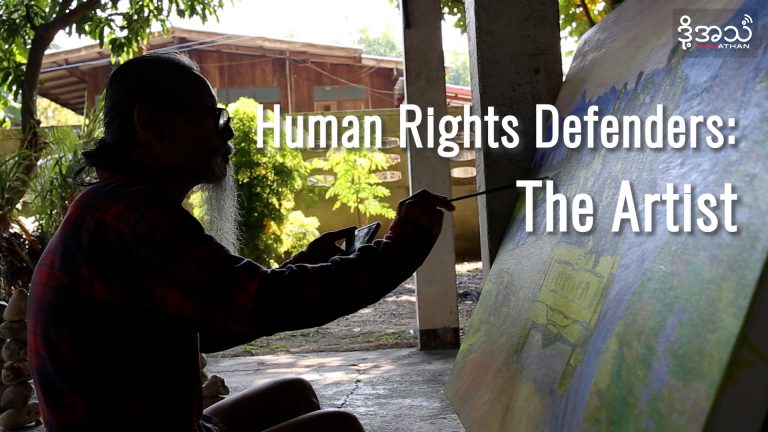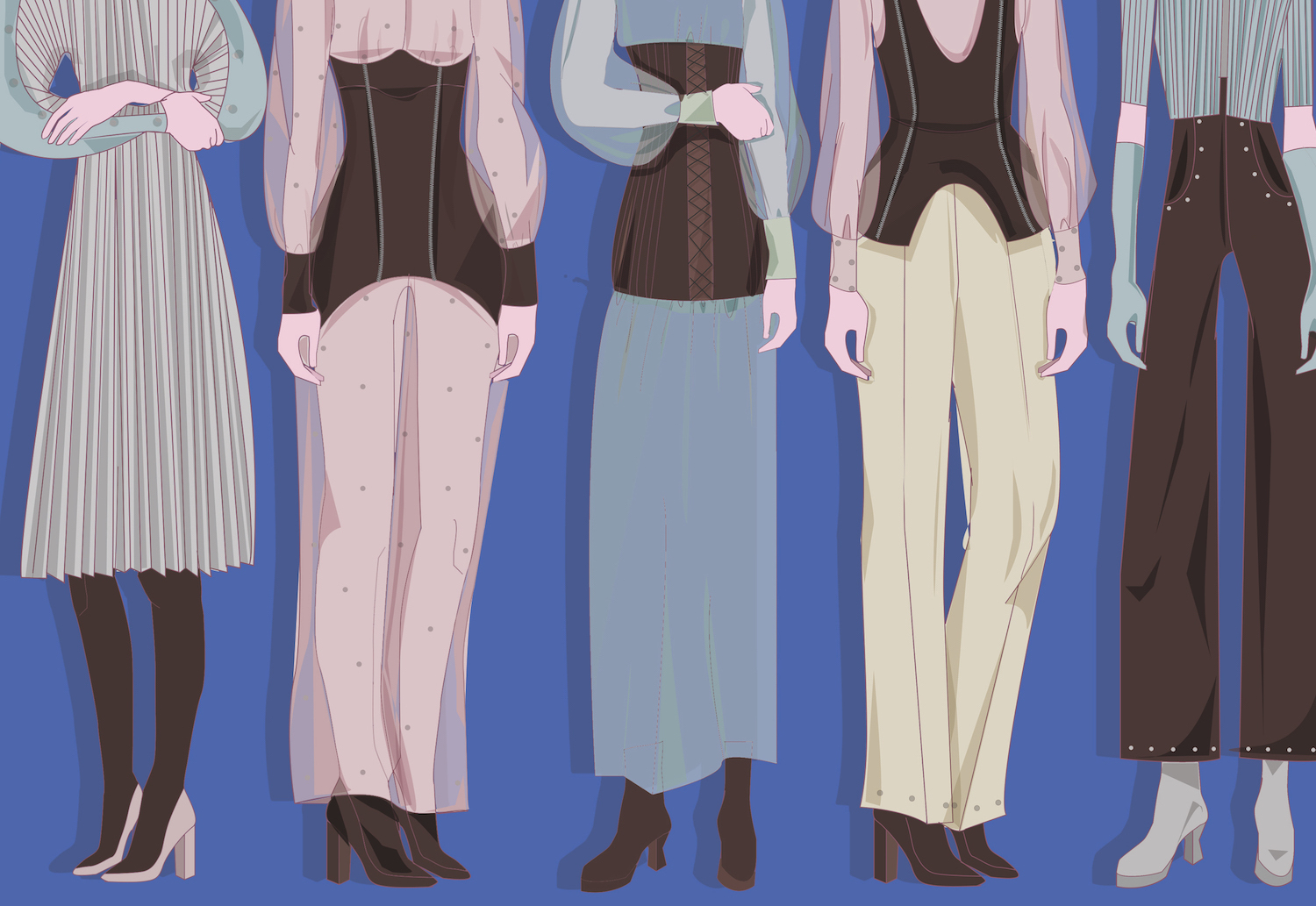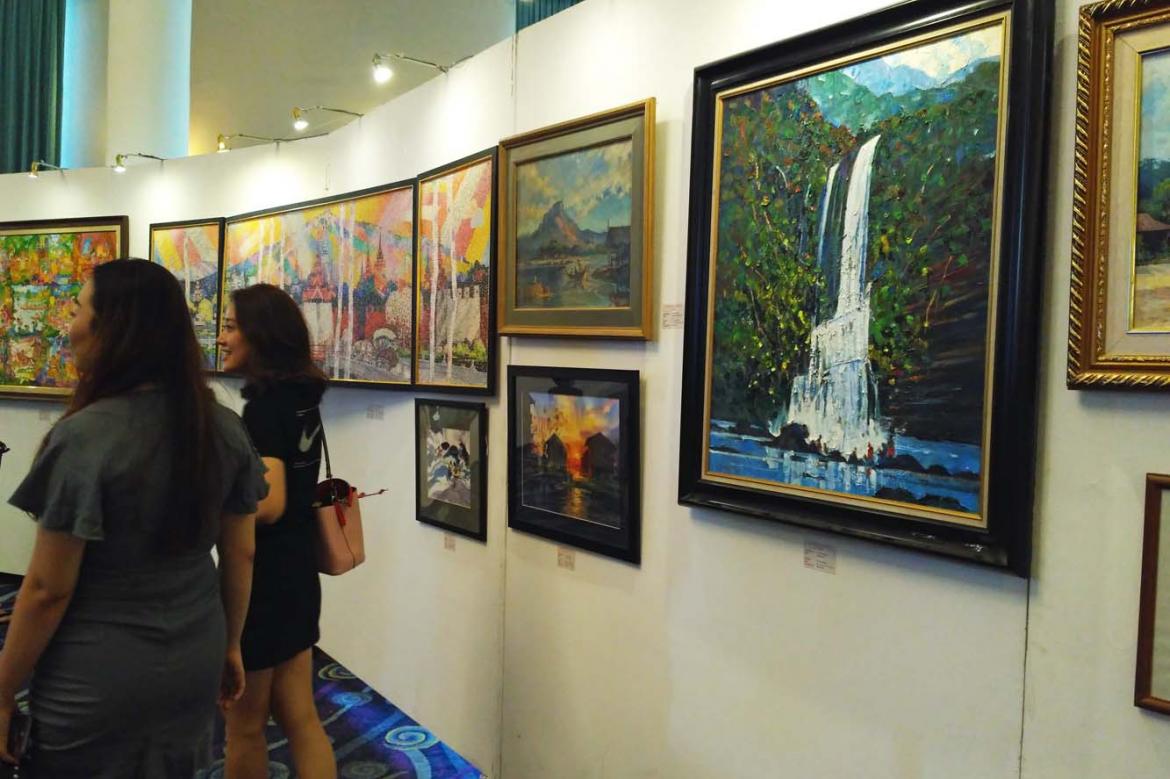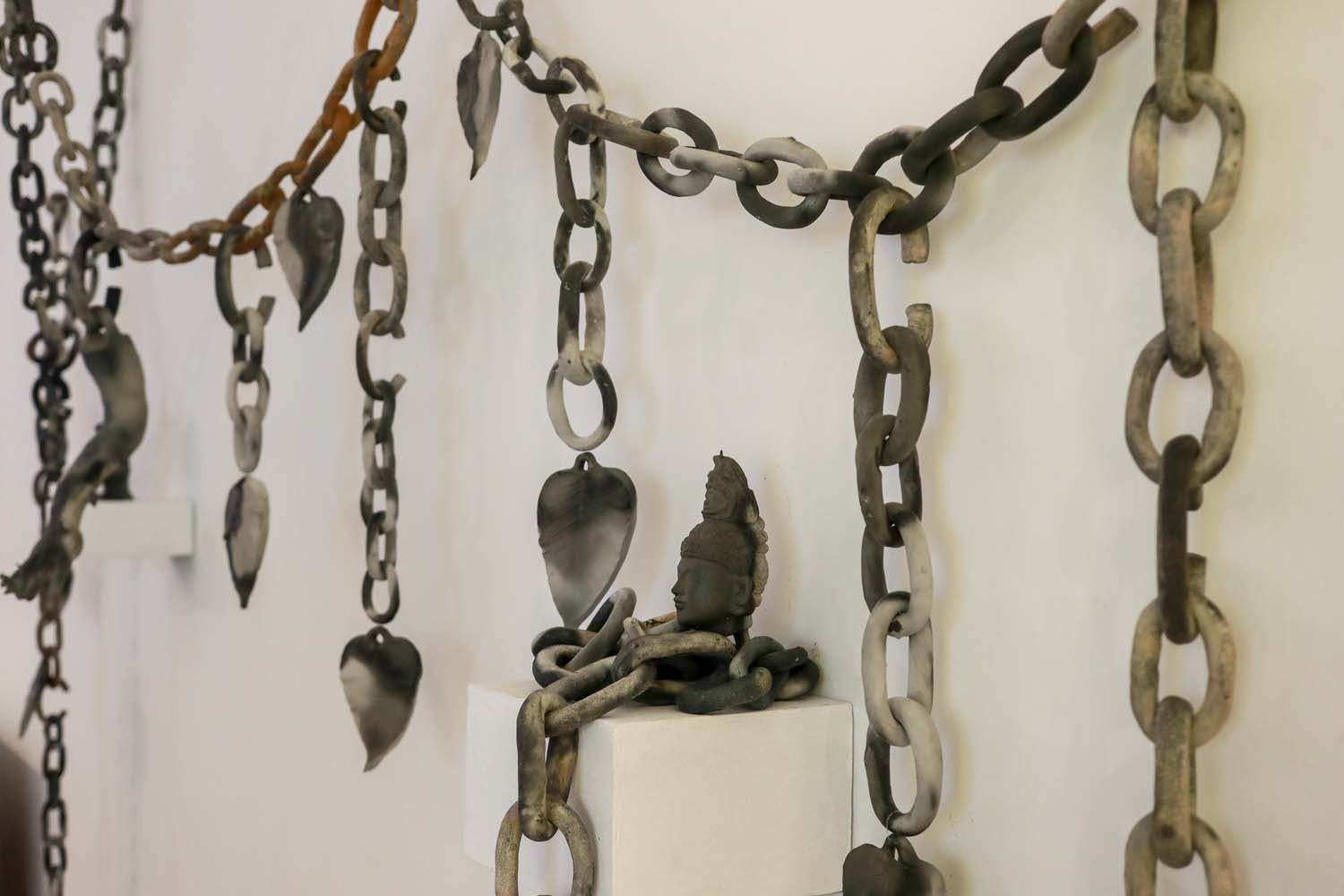A cartoon circulating on Facebook about the national flood disaster shows two members of the ruling Union Solidarity and Development Party – one of whom bears a striking resemblance to President U Thein Sein – in a boat distributing goods to people up to their waists in water.
One is giving away a T-shirt showing the USDP logo and the other, bespectacled and sitting beside a ballot box, is offering a man a voting card with the party logo. Another cartoon on Facebook, with captions in English, shows three family members in waist-deep water lamenting their losses to a government official. Dad says he has lost the house to floodwaters, mum says she’s lost her cow and their son says he’s lost his school books. “OK, don’t worry,” says the official. “I also lost my National Disaster Management Plan”.

A Myanmar cartoonist signs a shirt as part of a flood relief fundraiser in Yangon. (Ann Wang / Frontier)
In Myanmar, cartoons have long been a popular way of making light of an issue or poking fun at the country’s leaders. They were often used to satirise members of the British establishment when the country was under colonial rule.
During the Socialist period and the military dictatorship, pre-publication censorship ensured that newspaper cartoons satirising the government never saw the light of day. But cartoons did appear in state-run publications. Some were vicious, vulgar caricatures of opposition leader Daw Aung San Suu Ki.
Since reforms began in 2011, cartoons have been increasingly effective as a media tool. The examples cited at the beginning of this story illustrate how cartoons have been used to bring attention to the national flood disaster and ridicule the government’s initial inadequate response and weaknesses in its disaster management preparation measures.
“I think people like political cartoons in Myanmar because we had a cruel military government for many years, so now people enjoy a simple method that laughs at the government,” said cartoonist Ko Waiyan Taunggyi, who has published cartoons on the floods, the Letpadan student crackdown in March and other controversial topics. “It goes back to our childhood. We used to spend a lot of time reading and drawing cartoons and that habit has stayed with us until we are older.”
Ko Waiyan Taunggyi launched his career as a cartoonist by producing comic books, but the work earned little money. When pre-publication censorship of the private sector press was abolished in August 2012, he began drawing cartoons for newspapers and magazines.

Cartoonist Ko Waiyan Taunggyi sketches comics at his studio in Yangon. (Ann Wang / Frontier)
On July 30, when the government released under amnesty 155 Chinese illegal loggers – most of whom had been sentenced to life prison terms eight days earlier – he drew a cartoon mocking the decision.
It depicted Ko Waiyan Taunggyi walking towards a school, with a caption saying: “When I found out who is above the law, I enrolled in a Chinese-language class straight away.”
There has been little negative reaction from the authorities to cartoons satirising the government, he said.
It was different under military rule. One of Myanmar’s most famous cartoonists is Harn Lay, best known for satirising the military junta and most notably its leader, Senior General Than Shwe. In most of Harn Lay’s sketches, the dictator would be portrayed as balloon-shaped with a sinister look in his eye acting to the detriment of the country.
Harn Lay began drawing cartoons under the pseudonym ‘Sun Ray’ after the military seized power in September 1988. Harn Lay said he avoided detection by hiding in a small village from government agents hunting for someone they knew only as ‘Sun Ray’. In 2002, worried that he was about to be discovered, he fled to Chiang Mai in Thailand and began drawing cartoons as Harn Lay.
“I think that the situation is better now for cartoonists,” he said. “Maybe the government watches cartoonists now, but they are unlikely to arrest them. You do still sometimes have limits as a cartoonist in Myanmar. If the message is too strong against the government for example, then you could end up in trouble.”
Referring to a Myanmar version of the story of the ‘Emperor’s New Clothes’, in which a child tells a king that he is not wearing any clothes because his courtiers are too frightened to be truthful about his state of undress, Harn Lay said cartoons have the power to comment on ideas or issues that would normally not be mentioned.
“A cartoon is like a child in the sense of pointing out the truth,” he said. “People know what the government is like, but they cannot or will not say. But a child can … point out the truth about what is happening and cartoons do the same,” he said.
Cartoons have a way of sharing experiences between the artist and his audience, which is why they have been so popular since the flood crisis began, Harn Lay said at an event hosted by cartoonists in Yangon on August 6 to raise money for flood victims.

One of cartoonist Ko Waiyan Taunggyi’s creations, depicting US actress Angelina Jolie being feted around a flooded Myanmar village. (Ann Wang / Frontier)
“Usually a cartoon is able to share what people are feeling, and people in Myanmar feel very passionate about the floods,” he said. “That’s why I think they are popular in sharing people’s feelings about this.”
Internationally, the role of cartoons has attracted considerable attention since the attack on the Charlie Hebdo magazine office in Paris in January. The magazine had regularly published caricatures of the Prophet Muhammad, the depiction of whose image is highly offensive to many Muslims and taboo in most Islamic communities. The attack on the office, by two Islamic extremists, left 11 people dead and 11 injured.
The incident triggered an international debate about the freedom of expression of the media. In Myanmar, religion as a topic is off-limits for most cartoonists.
“Religion and politics together make things difficult and if they are mixed it is not good,” Harn Lay said. “I am only interested in drawing about politics, not religions,” he said, adding that cartoonists may eventually address religious topics in their work in what would be a gradual process.
As the November 8 election approaches, U Thiha Saw, vice chair of the Myanmar Journalists’ Association, said cartoons will be an effective tool for focussing attention on important issues related to the ballot. But religion remains a topic most cartoonists would avoid, U Thiha Saw said.
“We don’t often see it, and I think this is because they recognise the power that their images and cartoons can have and they know how sensitive religion is as a topic in Myanmar today,” he said.







